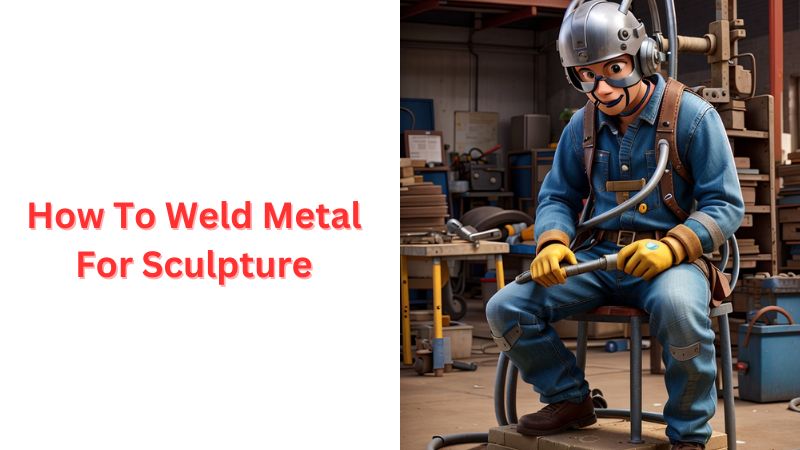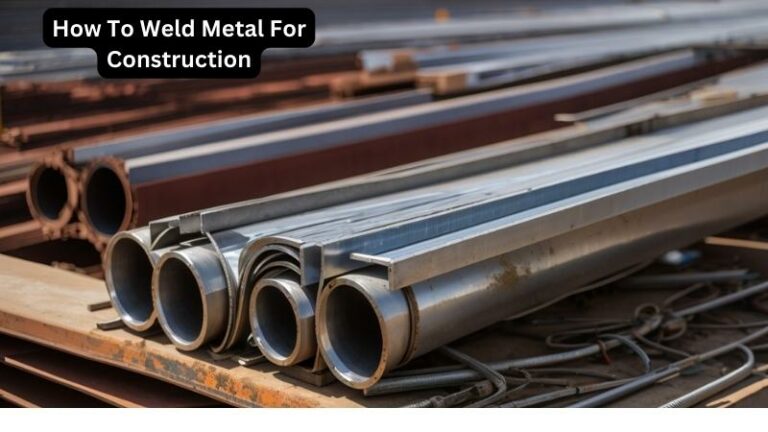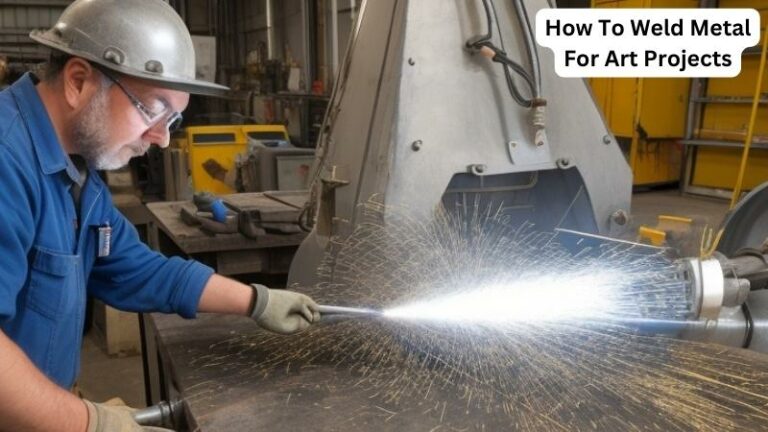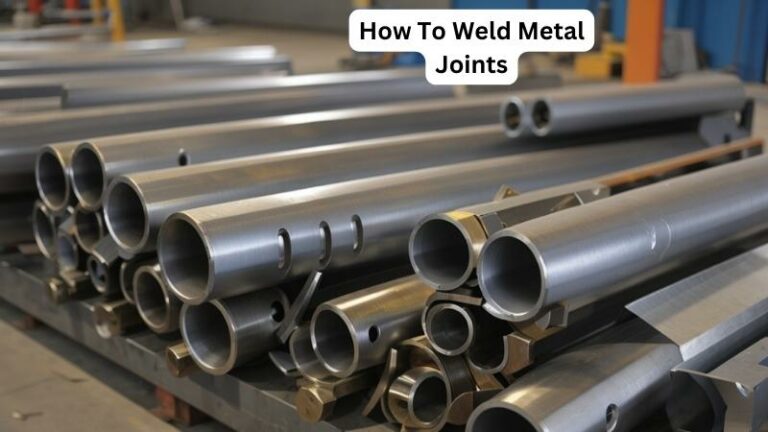How To Weld Metal For Sculpture
Today we discuss How To Weld Metal For Sculpture. While various materials can be used to bring these three-dimensional masterpieces to life, metal has long been favored for its durability and versatility. And when it comes to joining metal pieces together seamlessly, welding emerges as an indispensable skill for any aspiring sculptor. In this guide, we will delve into the art of welding metal for sculpture, exploring the techniques, tools, and safety measures necessary to transform raw metal into captivating works of art.
Welding, the process of fusing metal parts together using heat and pressure, offers sculptors endless possibilities to create intricate and robust structures. Whether you are a seasoned artist looking to expand your repertoire or a beginner eager to embark on a new creative journey, mastering the art of welding can open up a world of artistic possibilities.
From understanding the different types of welding methods to selecting the appropriate equipment and materials, this guide will provide you with a comprehensive overview to help you navigate the fascinating world of welding metal for sculpture. So, grab your welding helmet, and let’s ignite the fire of your artistic vision as we explore the transformative power of metal and the art of welding.

some ways to Weld Metal For Sculpture:
Step 1: Gather the Required Materials
Before you begin welding, it’s essential to gather all the necessary materials. This ensures that you have everything you need within reach, allowing for a smooth and uninterrupted welding process. Here’s a list of the main materials you’ll need:
- Welding machine: Choose a welding machine suitable for the type and thickness of metal you’ll be working with.
- Welding helmet: Protect your eyes and face from sparks and harmful UV rays with a welding helmet.
- Welding gloves: Invest in high-quality welding gloves to shield your hands from burns and sparks.
- Welding electrodes: Select the appropriate welding electrodes based on the type of metal you’ll be welding.
- Clamps and magnets: These tools are handy for holding the metal pieces in place during welding.
- Wire brush: Use a wire brush to clean the metal surfaces before welding, ensuring a strong bond.
Once you have gathered all the necessary materials, you’re ready to move on to the next step.
Step 2: Prepare the Metal Surfaces
Properly preparing the metal surfaces before welding is crucial for achieving a strong and durable bond. Follow these steps to ensure your metal surfaces are clean and ready:
- Remove any rust, paint, or dirt from the metal using a wire brush. This will allow for better adhesion during welding.
- Ensure that the metal surfaces are free of any oil or grease. Use a degreaser or alcohol-based cleaner to remove any residues.
- If the metal pieces have sharp edges or burrs, use a file or grinder to smooth them out. This will prevent any interference during the welding process.
By taking the time to properly prepare the metal surfaces, you’ll ensure a clean and strong weld.
Step 3: Set Up Your Welding Equipment
Now that your materials are gathered and your metal surfaces are prepared, it’s time to set up your welding equipment. Follow these steps:
- Ensure that your welding machine is properly connected to a power source and that all safety measures, such as grounding, are in place.
- Put on your welding helmet and gloves to protect yourself from sparks and UV radiation.
- Position the metal pieces to be welded securely, using clamps or magnets to hold them in place.
- Choose the appropriate welding electrode for the metal type and insert it into the welding machine.
- Adjust the welding settings on the machine, such as voltage and wire speed, according to the thickness of the metal.
With your welding equipment set up correctly, you’re ready to start the welding process.
… (continue with additional steps and paragraphs)
faqs for Weld Metal For Sculpture:
When it comes to welding metal for sculpture, the most commonly used process is arc welding. This method involves the use of an electric arc to melt the metal and create a strong bond between the pieces. It is a versatile and relatively easy process to learn, making it ideal for sculptors of all skill levels.
Another popular welding process for metal sculpture is TIG welding, which stands for tungsten inert gas. This method uses a tungsten electrode to create an arc and a filler metal to join the pieces. TIG welding offers precise control and produces clean and aesthetically pleasing welds, making it a popular choice for intricate and detailed sculptures.
Welding metal can be hazardous, so it’s important to take proper safety precautions. Always wear protective clothing, including a welding helmet, gloves, and flame-resistant clothing. Make sure your workspace is well-ventilated to avoid inhaling harmful fumes.
Various metals can be welded for sculpture, but some are more commonly used than others. Steel is a popular choice due to its strength and durability. It can be easily shaped and welded, making it a versatile option for sculptors.
Other metals suitable for welding sculptures include aluminum, bronze, and copper. Each metal has its own unique properties and characteristics, so it’s essential to consider the specific requirements of your sculpture when selecting the appropriate metal.
To weld metal for sculpture, you will need a few essential tools and equipment. Firstly, you’ll need a welding machine, such as an arc welder or a TIG welder, depending on your preferred welding method.
In addition to the welding machine, you’ll need safety gear like a welding helmet, gloves, and protective clothing. You’ll also need welding electrodes or filler metal, depending on the welding process you’re using. Other necessary tools include clamps, wire brushes, and a grinder for cleaning and finishing the welds.
Yes, it is possible to weld different types of metal together for your sculpture. However, it’s important to consider the compatibility of the metals you are using. Some metals have different melting points and require specialized welding techniques or filler metals.
Before attempting to weld different metals together, it’s advisable to consult with a professional welder or do thorough research to ensure you are using the correct techniques and materials. Proper preparation and understanding of the metals involved will help you achieve strong and durable welds for your sculpture.

Source: ytimg.com
conclusion:
mastering the art of welding metal for sculpture is a skill that opens up a world of creative possibilities. As we have discussed, it requires a combination of technical knowledge, precision, and artistic vision. By understanding the different types of welding techniques and selecting the appropriate tools and materials, artists can bring their visionary ideas to life, transforming ordinary pieces of metal into captivating works of art.
However, it’s important to remember that welding is not just about the technical aspects; it is a form of self-expression. Artists should embrace their unique style and experiment with different welding methods to create sculptures that resonate with their audience. Whether it’s the sleek lines of a minimalist sculpture or the intricate details of a larger-than-life installation, welding metal allows artists to push boundaries and challenge the limits of their creativity.
So, let us not be afraid to pick up the welding torch and explore the possibilities that lie within the world of metal sculpture. With practice, dedication, and an unwavering passion for the craft, we can master the art of welding and create sculptures that leave a lasting impact on viewers, inspiring awe and admiration for generations to come.



